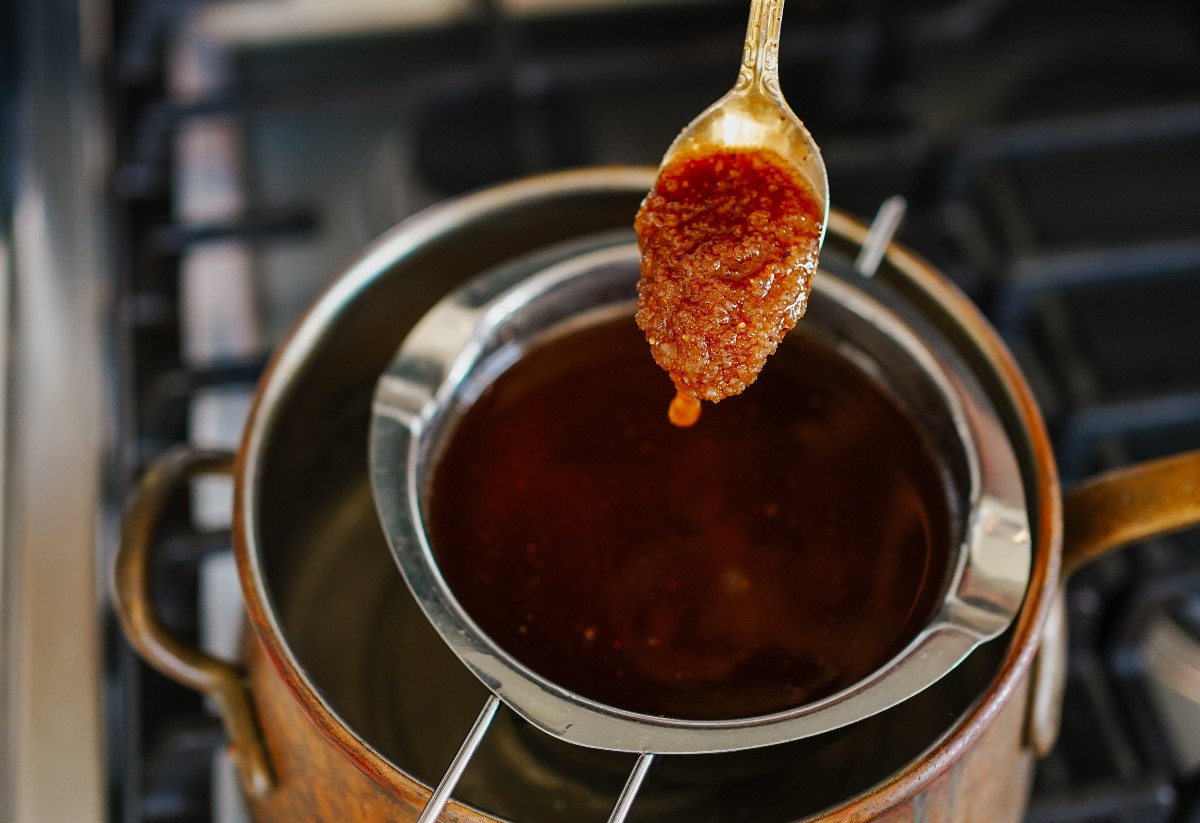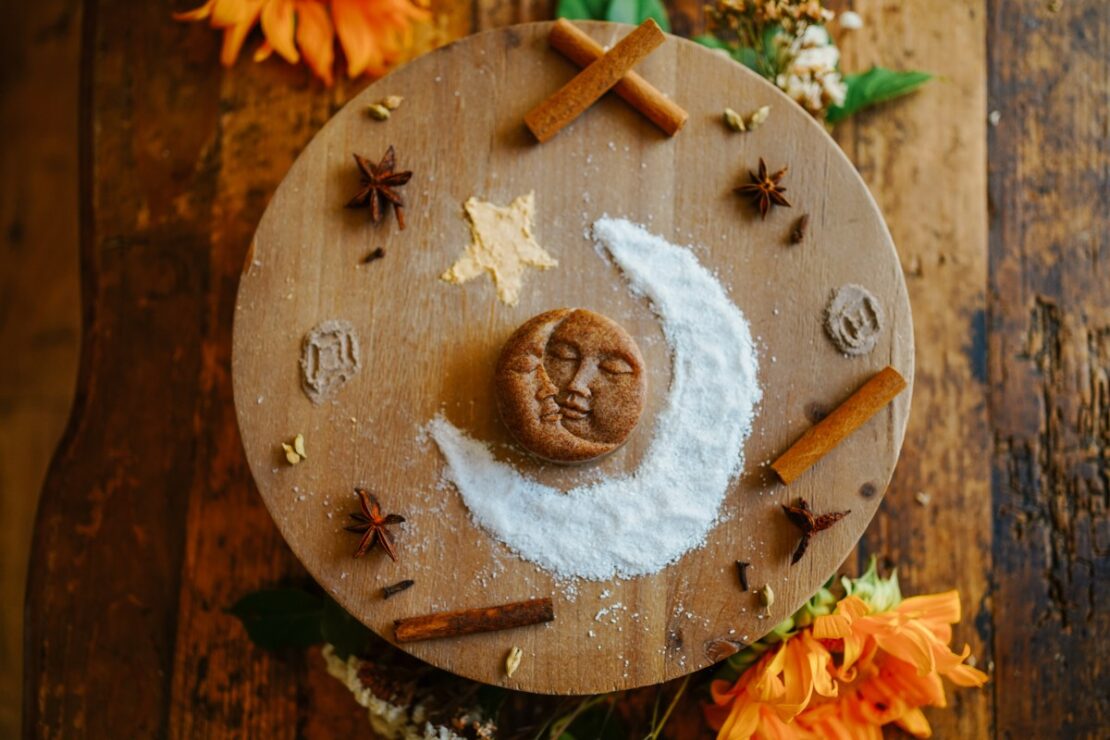
Let Your Winter Cares Melt Away With These Chai Spice Bath Melts
While many are familiar with the comforting experience of sipping a warm cup of chai, here at the Herbal Academy we have concocted another way to engage the properties of these herbs— chai spice bath melts. In this exploration, we will delve into masala chai herbs and learn how to create chai spice bath melts for an age-old aromatic experience with a new twist, in the comfort of your home.
The world of spices is a treasure trove of plant wisdom, brimming with an array of aromatic herbs and health benefits that have been cherished for centuries. At the heart of traditional spice blends lies the enchanting masala chai, a familiar brew crafted from a combination of herbs that not only tantalize the taste buds but take us on an aromatic journey.
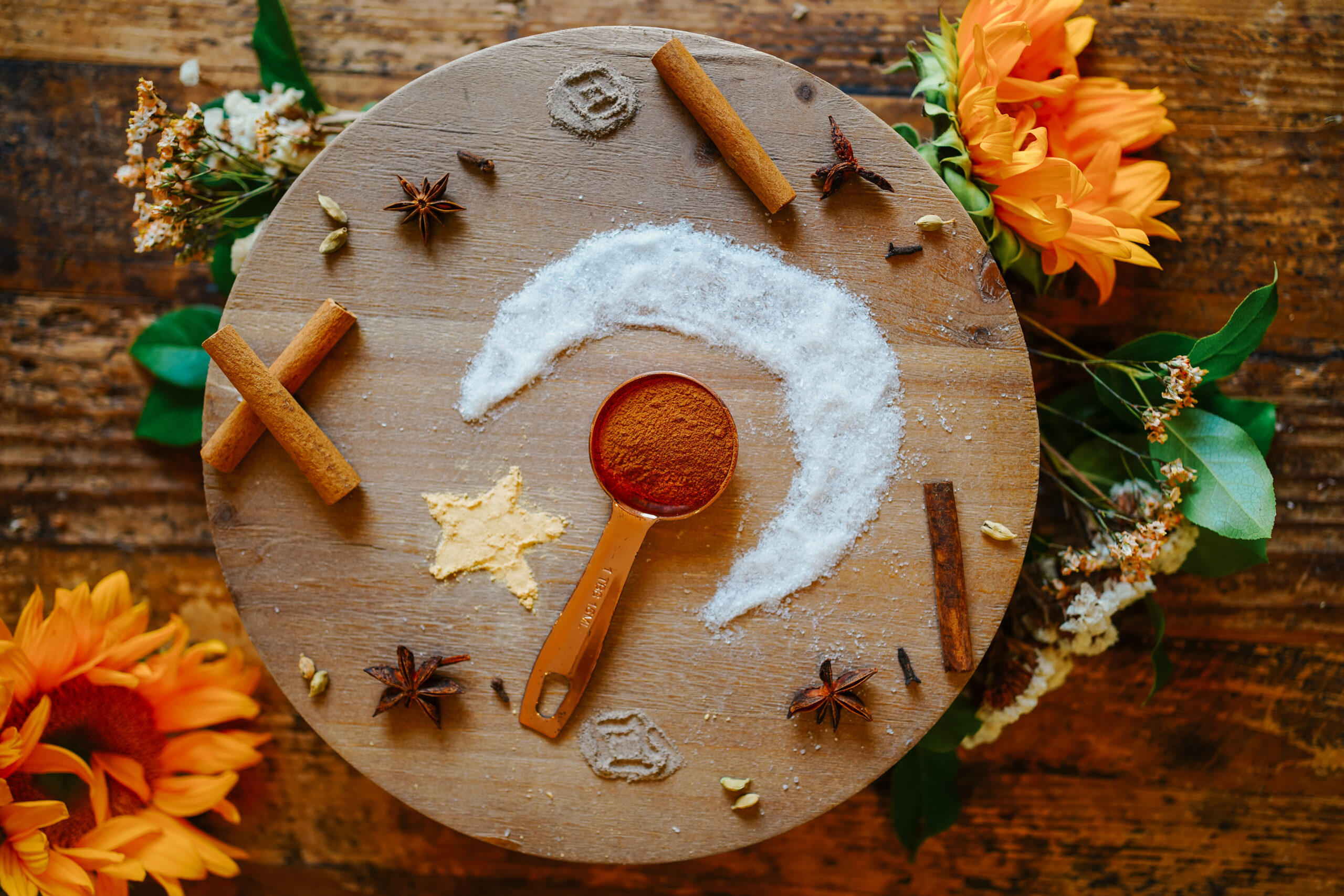
The Enchanting Masala Chai Herbs
Chai spices are the magical ingredients that lend this beloved beverage its distinct aroma. This aromatic blend typically includes five primary herbs and spices: cardamom, cinnamon, cloves, ginger, and black pepper.
We have included star anise, a commonly added chai spice, for an additional aromatic delight. While these herbs are renowned for creating a symphony of flavors in your favorite chai latte, the aromas of this spice blend can provide relaxation through inhalation and a sense of harmony in your nervous system.
Cinnamon (Cinnamomum spp.)
Cinnamon is a familiar presence in any chai spice blend. The smell of cinnamon brings with it strong, anxiolytic (anxiety reducing) properties and a sense of overall well-being (Nguyen et al., 2022). Topically, cinnamon can reduce sun damage to skin via its antioxidant and inflammation-reducing phytochemicals and has the potential to inhibit the formation of wrinkles (Tanaka et al., 2019).
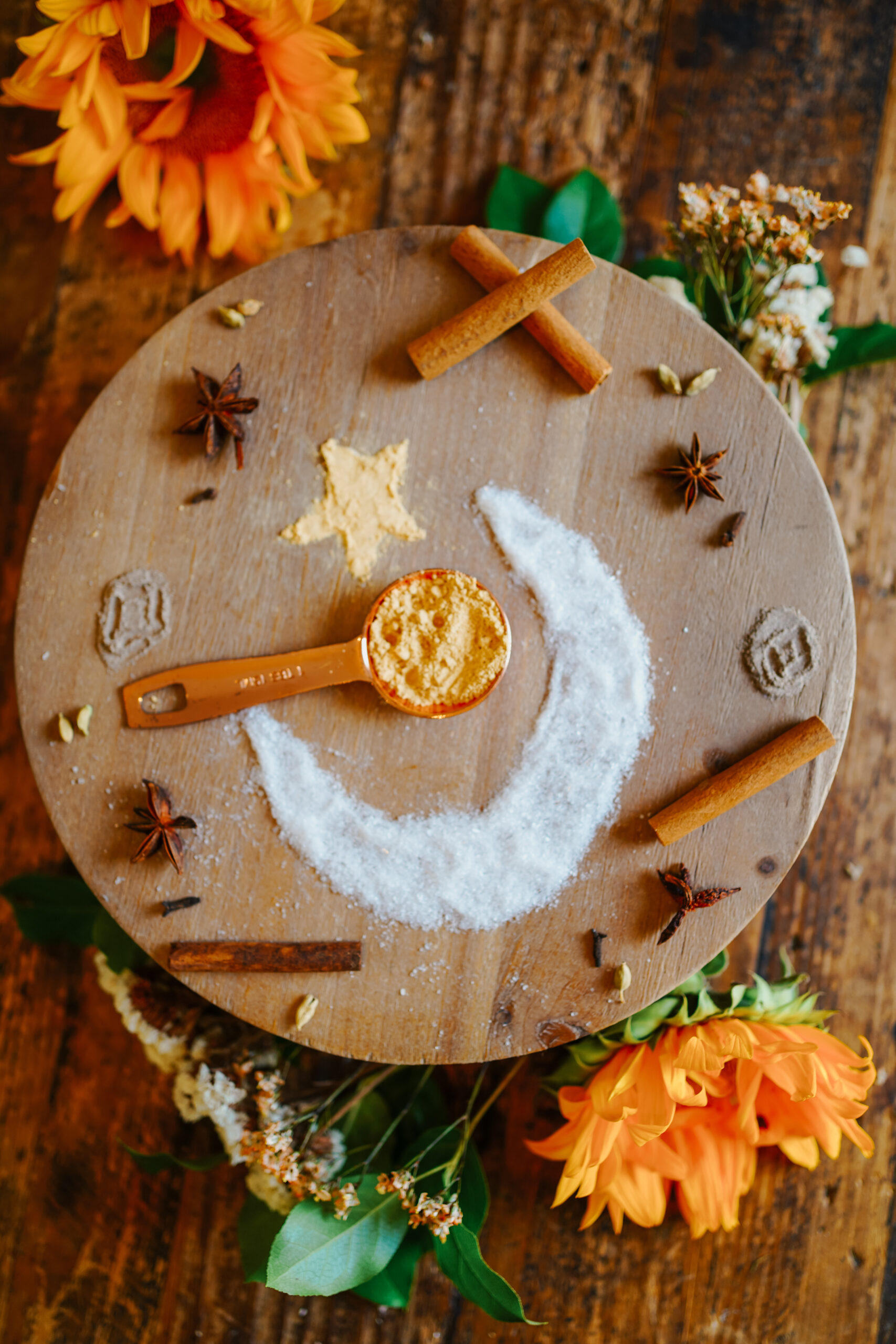
Ginger (Zingiber officinale)
Ginger is a well-known spice often praised for its ability to calm the stomach, and for good reason as it can be an effective support for nausea and digestive discomfort. Beyond its digestive benefits, ginger can ease muscle aches and pain, particularly after physical exercise, making it an ideal ingredient for a relaxing soak in the tub (Rondanelli et al., 2020).
Clove (Syzygium aromaticum)
Clove’s tiny, yet potent buds are traditionally used to ease pain as they show powerful antinociceptive properties, providing pain reduction by blocking the receptors involved in sensory stimuli (Cortés-Rojas et al., 2014). Cloves are also celebrated for their antimicrobial action, traditionally applied for oral care in cases of infection or ulceration (Ashu Agbor, M., & Naidoo, S., 2015).
Star Anise (Illicium verum)
Star anise gets its aroma in part from anethole, a phytochemical that accounts for this spice’s strong expectorant action. Used in a bath, this aromatic spice can help clear out congestion (Sharafan et al., 2022). Star anise is also effective at inflammation reduction by reducing the expression of pro-inflammatory cytokines and is used in the cosmetic industry to smooth and soften the skin (Sharafan et al., 2022).
Cardamom (Elettaria cardamomum)
Cardamom has calming properties, due to its potent anxiolytic effects, that offer a sense of wellbeing and relaxation (Masoumi-Ardakani et al., 2017). Cardamom will also deliver respiratory clearing and bronchial dilation, allowing the body to benefit from deep, relaxing breaths (Ashokkumar et al., 2020).
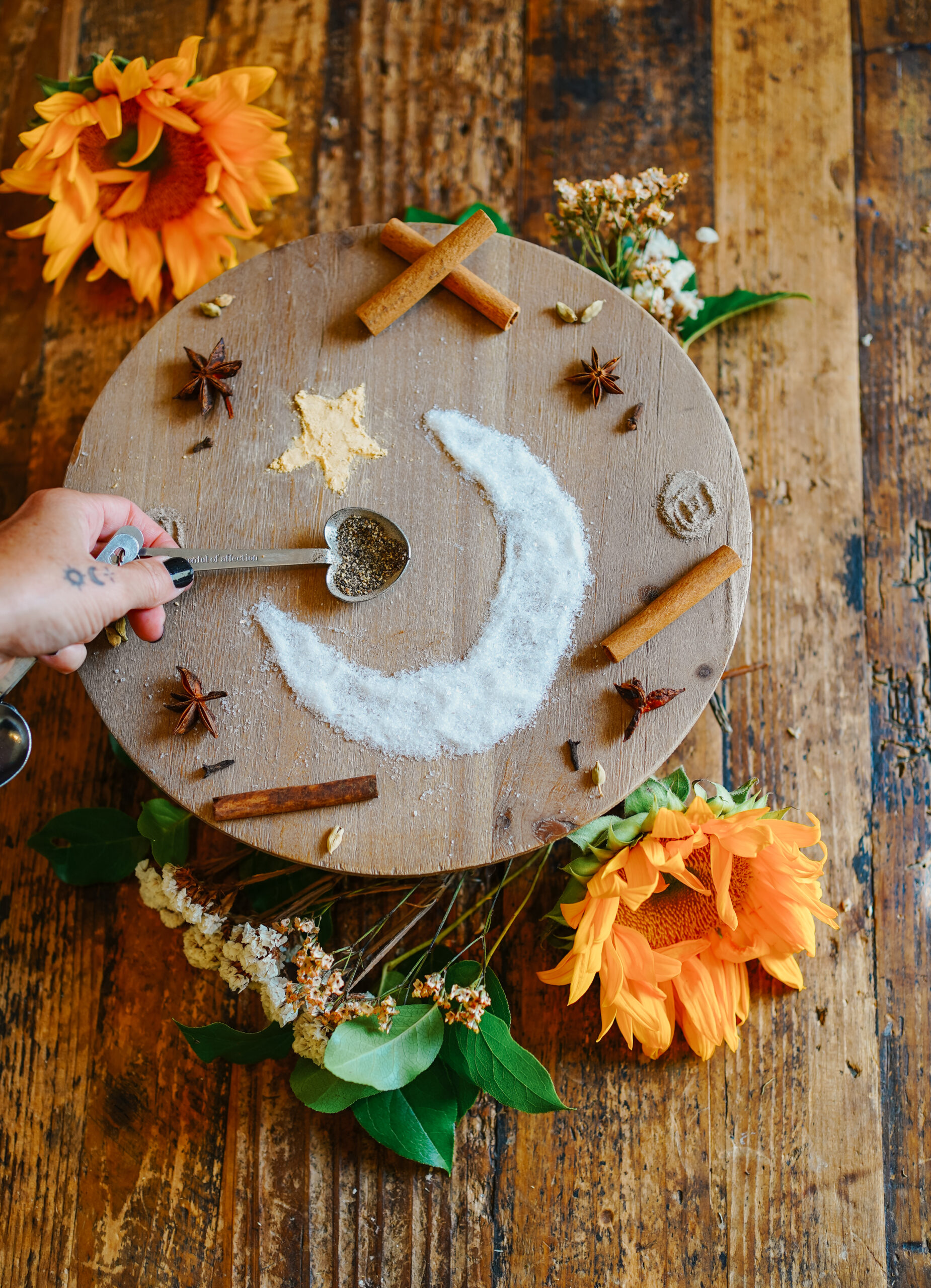
Black Pepper (Piper nigrum)
Black pepper’s spiciness provides a subtle mental boost, stimulating the skin and the senses. This common kitchen spice has been studied for its ability to reduce irritation and proliferation in inflammatory skin conditions such as psoriasis (Han et al., 2019).
DIY Chai Spice Bath Melts
Chai spice bath melts, while perhaps a less traditional use of chai spices, are designed to combine the comforting aromatic properties of chai spices with the moisturizing benefits of bath melts. These delightful concoctions are the perfect way to pamper yourself with a spa-like experience in the privacy of your own home and savor the aromatic joys of chai spices.
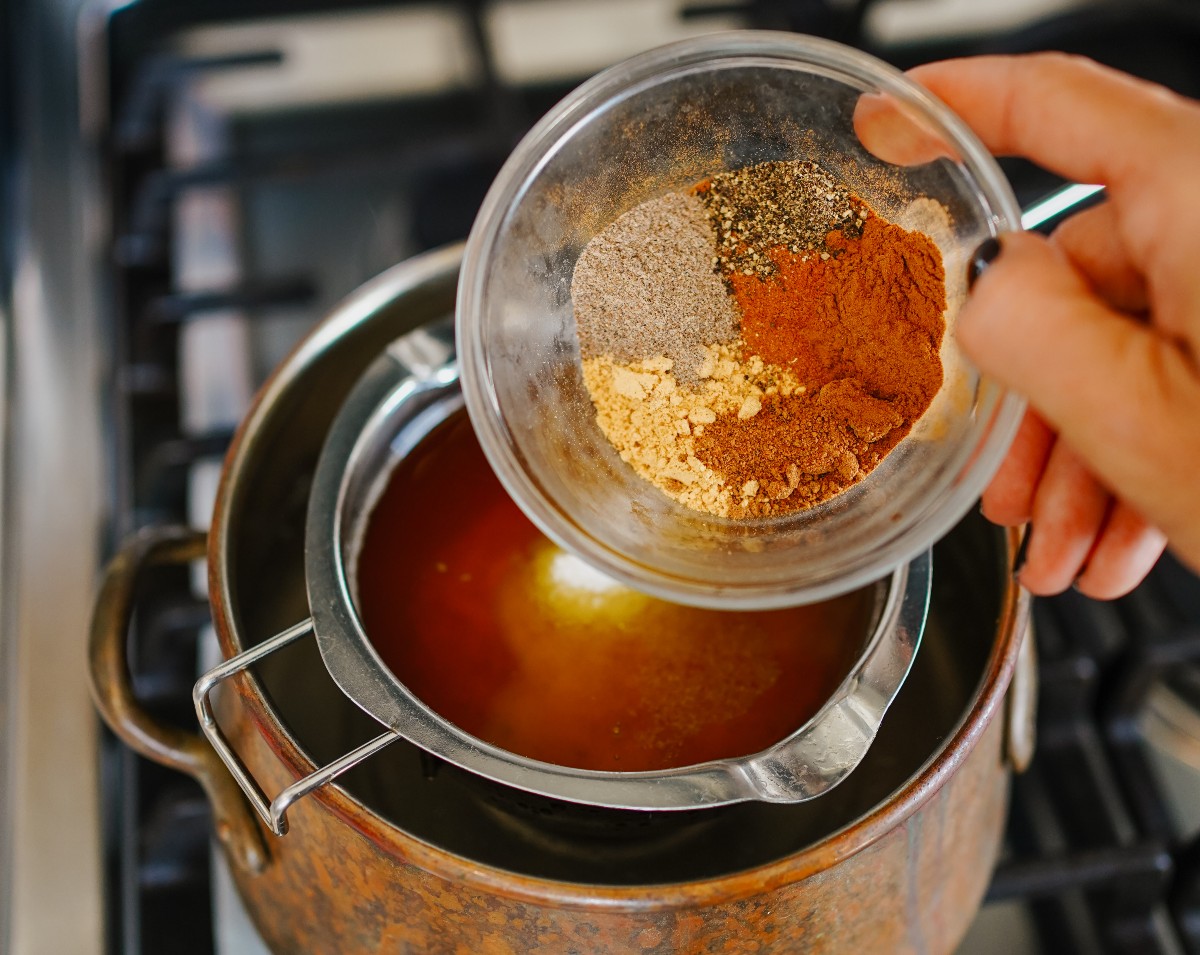
The Moisturizing Boost of Bath Melts
Before we delve into the captivating world of chai spice bath melts, let’s first understand what bath melts are and why they’re worth incorporating into your self-care routine.
Bath melts are luxurious and nourishing bath products that add a touch of lavishness to your bathing rituals. They are typically made with a mixture of rich, skin-loving ingredients like cocoa butter and shea butter. The primary purpose of bath melts is to moisturize and hydrate your skin, making them a perfect addition to your skin care routine.
These creations should remain solid at room temperature but melt upon contact with warm bathwater, releasing their moisturizing oils and relaxing aromas into the bath. This unique combination of nourishment and scent creates an indulgent and nourishing bathing experience.
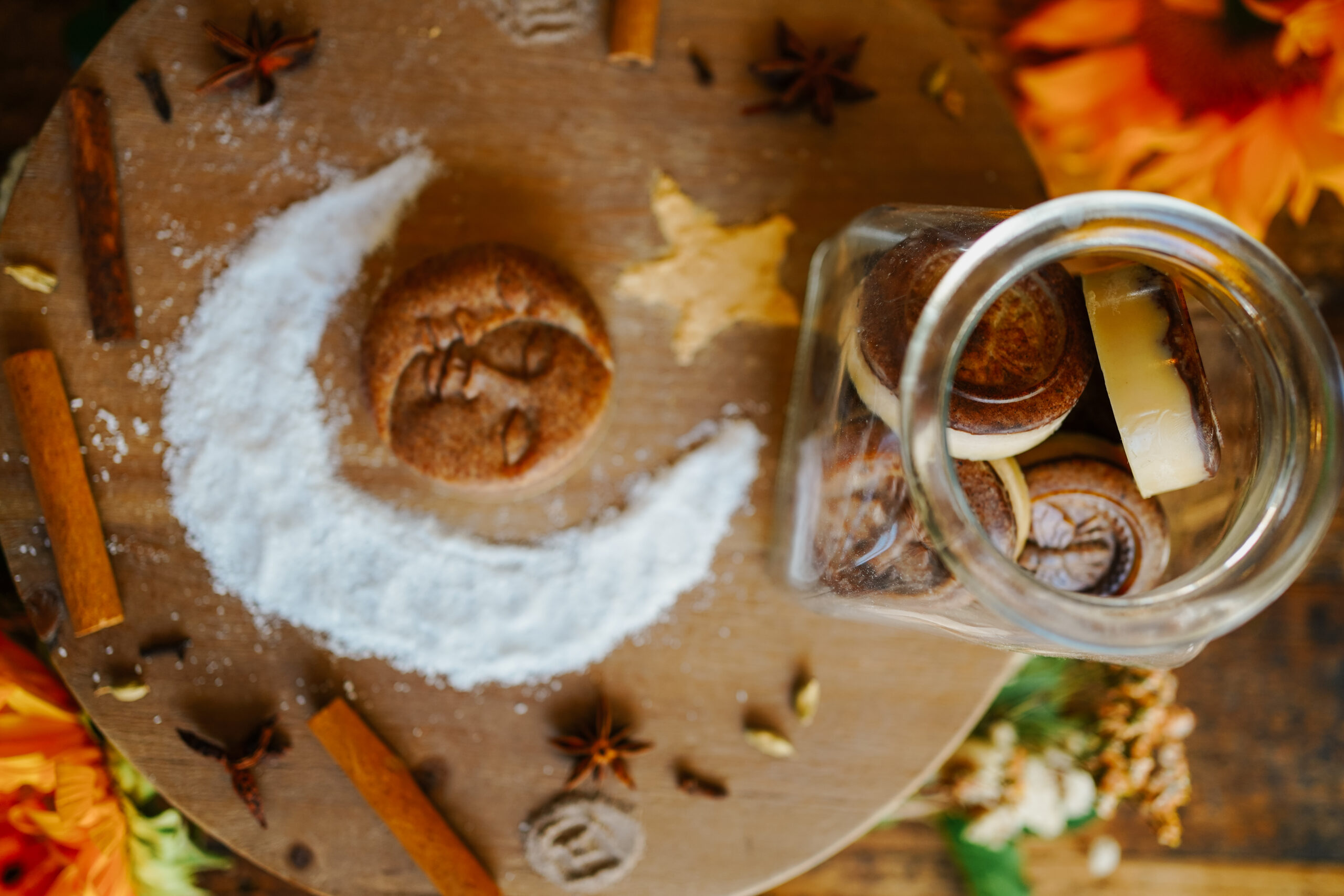
1 cup cocoa butterChai Spice Bath Melts
Chai spices have been cherished for generations, and now you can incorporate them into your life in a whole new light. Whether you’re seeking relaxation or a skin-soothing escape, the magic of chai spice bath melts will enhance your time in the tub. And creating these chai spice bath melts is actually a simple process.
½ cup shea butter
½ cup Epsom salts
1 tablespoon cinnamon (Cinnamomum spp.) bark, ground
1 tablespoon ginger (Zingiber officinale) rhizome, ground
1 tablespoon clove (Syzygium aromaticum) bud, ground
1 teaspoon star anise (Illicium verum) fruit, ground
1 teaspoon cardamom (Elettaria cardamomum) seed, ground
1 teaspoon black pepper (Piper nigrum) fruit, ground
Notes:
- To avoid potentially clogging pipes, use these bath melts on occasion and not daily. Also, if you have issues with clogged plumbing already, it may be best to avoid using bath melts at all.
- Since the butters in these bath melts can be slippery, be careful getting in and out of your tub and wipe out the tub to remove any oily residue after the water drains.
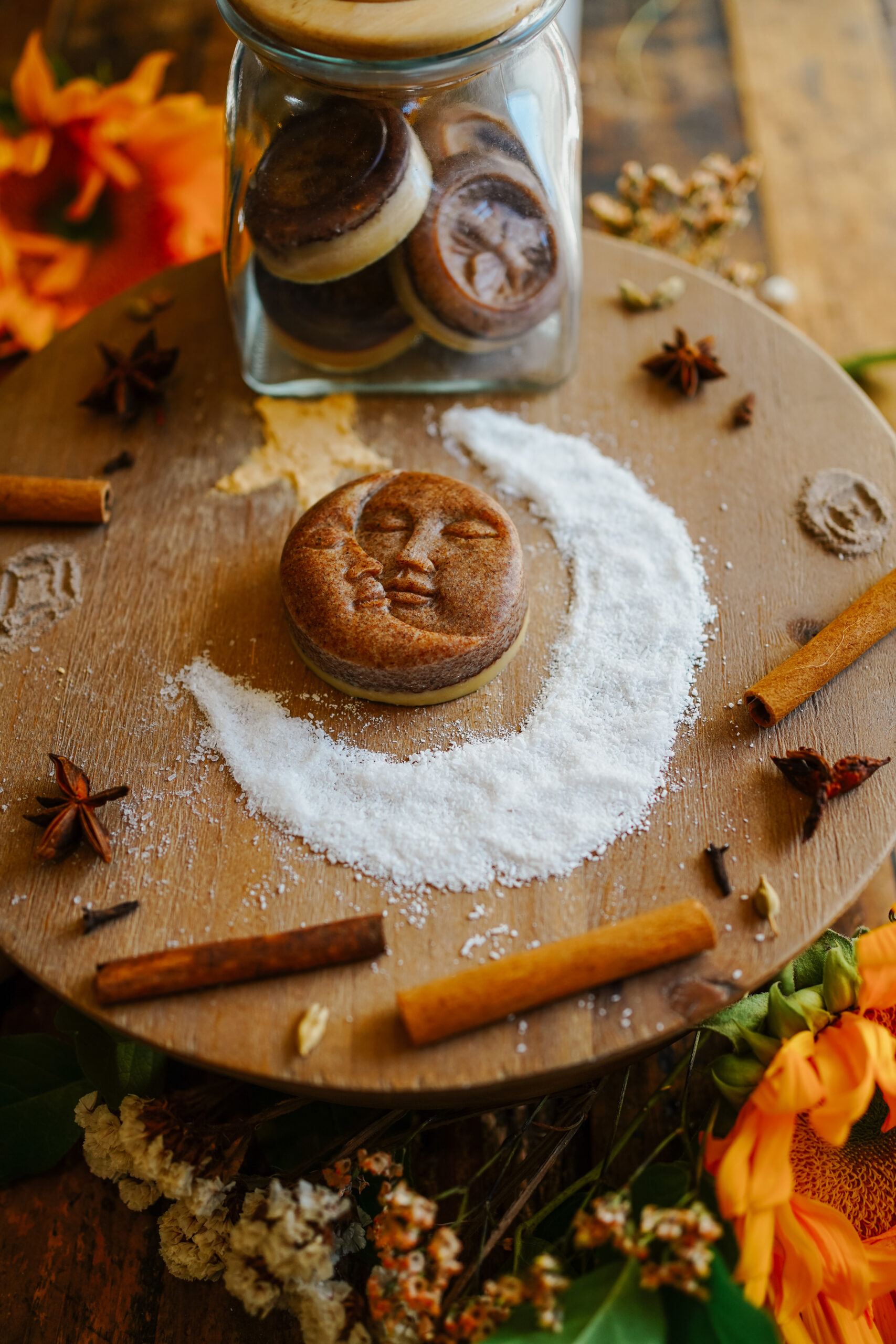
Relax with Chai Spice Bath Melts
Now that you’ve crafted your very own chai spice bath melts, let’s explore how to incorporate them into a bathing ritual.
- Run a warm bath and create a serene environment. Light some candles, play soothing music, or simply enjoy the peaceful ambiance.
- Place one of your handmade Chai Spice Bath Melts into the bathwater. As the melt dissolves, it releases the soothing chai aroma, setting the stage for aromatic relaxation.
- Step into the bath and soak in the aromatic waters. Close your eyes, take a deep breath, and let the fragrance transport you to a place of relaxation.
- While you’re enjoying the bath, your skin will benefit from the nourishing properties of the chai spice bath melt. The combination of cocoa butter, shea butter, and spice will leave your skin feeling soft and moisturized.
This is a journey of aromatic relaxation, inspired by centuries of tradition and enriched by the magic of spices.
In Closing,
Chai Spice Bath Melts allow you to embrace the aromas of chai spices in a unique and indulgent way, immersing yourself in an experience that combines the allure of spice with the nourishing properties of bath melts.
By creating your own batch of these aromatic bath companions, you can let your cares melt away in soothing waters, for which your body and mind will be thankful.
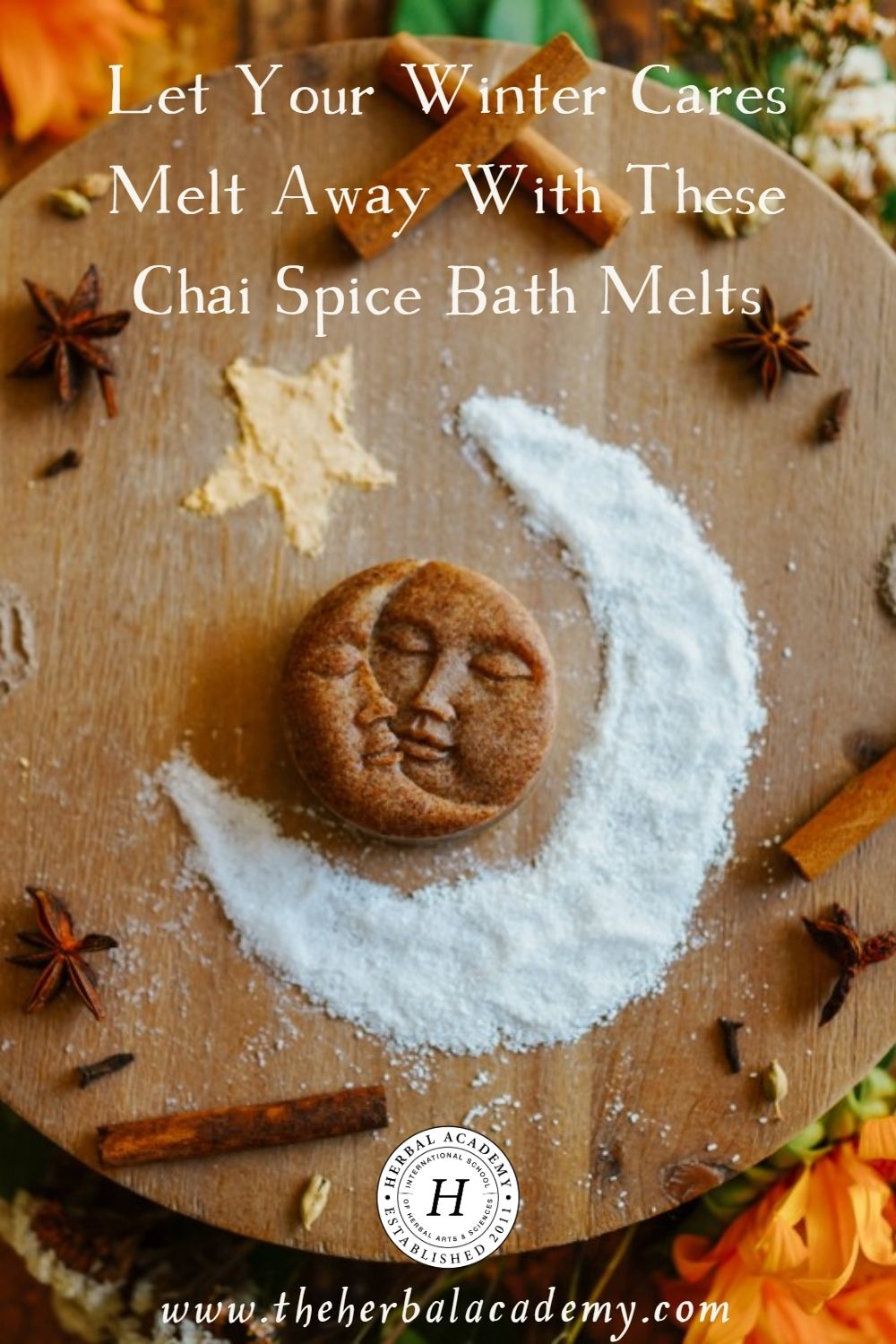
REFERENCES
Ashokkumar, K., Murugan, M., Dhanya, M.K., & Warkentin, T.D. (2020). Botany, traditional uses, phytochemistry and biological activities of cardamom [Elettaria cardamomum (L.) Maton] – A critical review. Journal of Ethnopharmacology, 246, 112244. https://doi.org/10.1016/j.jep.2019.112244
Ashu Agbor, M., & Naidoo, S. (2015). Ethnomedicinal plants used by traditional healers to treat oral health problems in cameroon. Evidence-based Complementary and Alternative Medicine : eCAM, 2015, 649832. https://doi.org/10.1155/2015/649832
Cortés-Rojas, D.F., de Souza, C.R., & Oliveira, W.P. (2014). Clove (Syzygium aromaticum): A precious spice. Asian Pacific Journal of Tropical Biomedicine, 4(2), 90–96. 60215. https://doi.org/10.1016/S2221-1691(14)60215-X
Han, X., Beaumont, C., Rodriguez, D., & Bahr, T. (2018). Black pepper (Piper nigrum) essential oil demonstrates tissue remodeling and metabolism modulating potential in human cells. Phytotherapy Research, 32(9), 1848–1852. https://doi.org/10.1002/ptr.6110
Masoumi-Ardakani, Y., Mahmoudvand, H., Mirzaei, A., Esmaeilpour, K., Ghazvini, H., Khalifeh, S., & Sepehri, G. (2017). The effect of Elettaria cardamomum extract on anxiety-like behavior in a rat model of post-traumatic stress disorder. Biomedicine & Pharmacotherapy, 87, 489–495. https://doi.org/10.1016/j.biopha.2016.12.116
Nguyen, L.T.H., Nguyen, N.P.K., Tran, K.N., Shin, H.M., & Yang, I.J. (2022). Anxiolytic-like effect of inhaled cinnamon essential oil and its main component cinnamaldehyde in animal models. Molecules (Basel, Switzerland), 27(22), 7997. https://doi.org/10.3390/molecules27227997
Rondanelli, M., Fossari, F., Vecchio, V., Gasparri, C., Peroni, G., Spadaccini, D., … & Perna, S. (2020). Clinical trials on pain lowering effect of ginger: A narrative review. Phytotherapy Research, 34(11), 2843–2856. https://doi.org/10.1002/ptr.6730
Sharafan, M., Jafernik, K., Ekiert, H., Kubica, P., Kocjan, R., Blicharska, E., & Szopa, A. (2022). Illicium verum (star anise) and trans-anethole as valuable raw materials for medicinal and cosmetic applications. Molecules (Basel, Switzerland), 27(3), 650. https://doi.org/10.3390/molecules27030650
Tanaka, Y., Uchi, H., & Furue, M. (2019). Antioxidant cinnamaldehyde attenuates UVB-induced photoaging. Journal of Dermatological Science, 96(3), 151–158. https://doi.org/10.1016/j.jdermsci.2019.11.001

